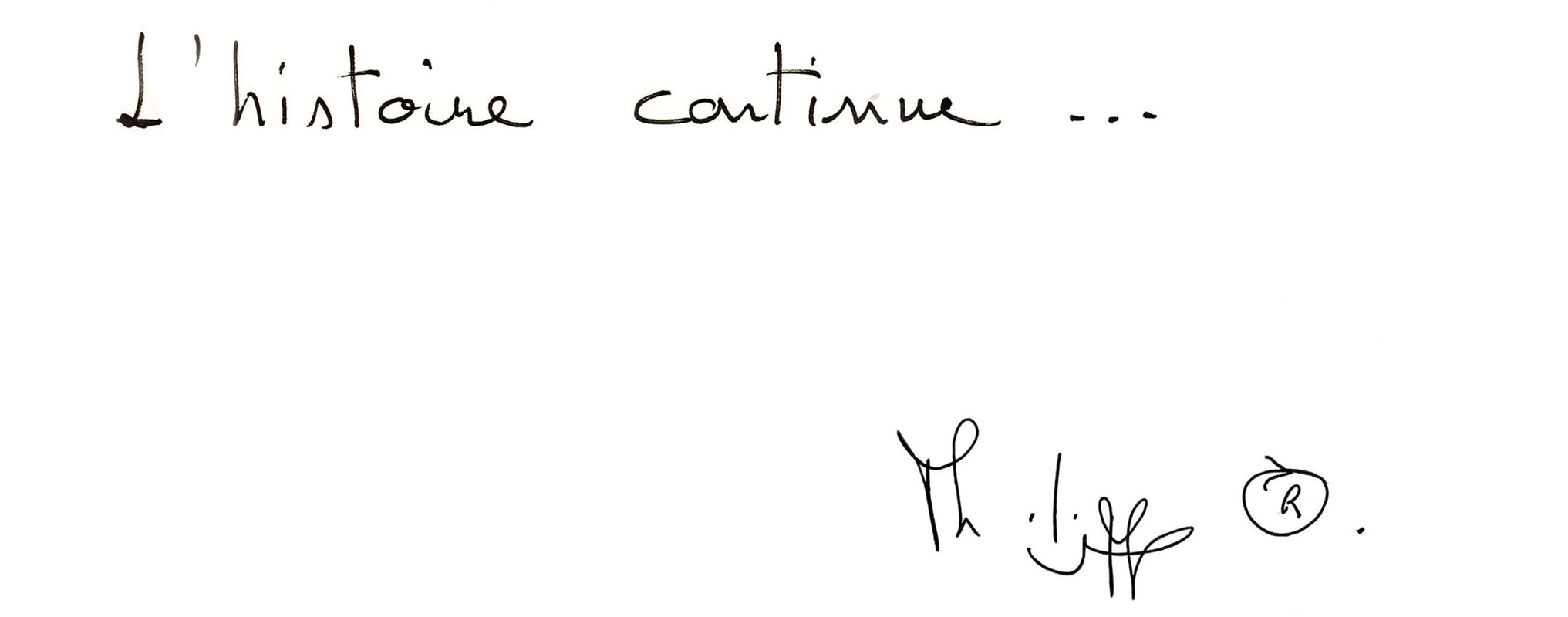A DIFFERENT KIND OF CONTINUITY
I'd like to thank all my customers, from the most modest to the most affluent, who have placed their trust in me... and made this story possible.
Family continuity
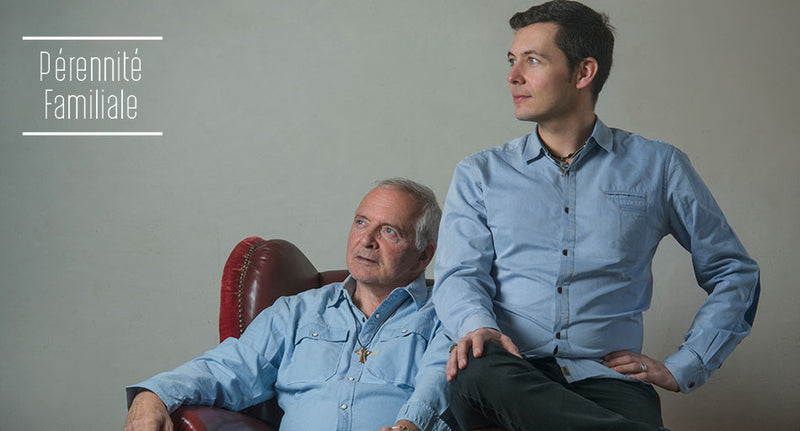
Mathieu joined us in 2007. It has to be said that he and his brother Romain had spent their childhood in the workshop. One day, he asked me: "I'd like to make some jewelry, what do you think? I wasn't against it, he knew, but I explained to him the difficulties he might encounter, always being compared, always the son of... But he accepted the challenge. When I spoke to Fred about it, he said very intelligently: "Why not, it's a good idea, provided he doesn't join the company straight away. He went to Lyon for a year, where he learned a lot. He came back after that, and I knew it had to work, because he was born and bred in the workshop. Having previously worked in education, he was already coming to work alongside us every Wednesday, and he very quickly became part of the team. He never looked down on anyone; on the contrary, he knew he had to be even more exemplary than anyone else if he wanted to be taken seriously. He has ideas, is increasingly creative and puts a lot of energy into bringing his projects to fruition. He gives of himself and travels a lot. He does a really good job.
Mathieu's hereditary passion Tournaire
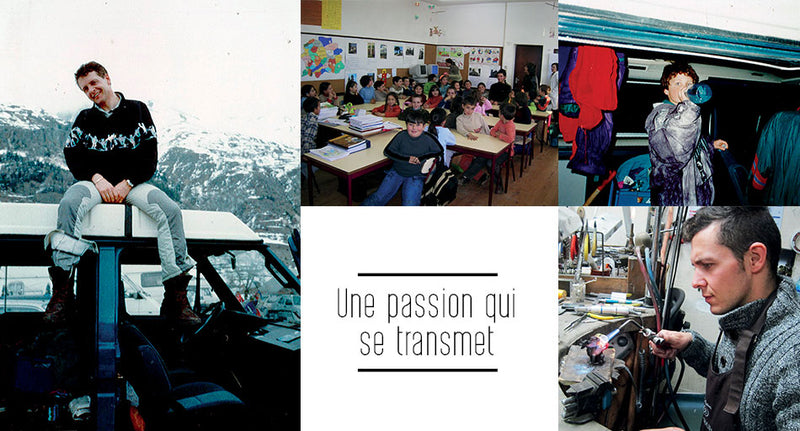
I "fell into the workshop" as a child. My earliest vivid memories with my father are of being in the store on rue Tupinerie. I remember making my first jewels and playing with colored stones. There were also times when my father would let me fumble with the precious stones, looking for harmonies of color for jewelry.
But there were also the trips that left their mark on me. With my father and brother, we did a lot of traveling in a Volkswagen minibus in which we slept. We stopped wherever we wanted and washed up whenever we could. It was a huge opportunity, because I learned a lot, and it was a different way of traveling from hotels where everything is clean and tidy. There we had to make do with and in nature. When we traveled, my father always forced us to visit churches and museums. Which didn't necessarily interest us when we were little. But after a while, it became natural for us to go and see monuments on our own. Today, I couldn't imagine going to a foreign country without discovering its culture and heritage. Thanks to these trips, my mother and father were able to pass on to me their love of historic buildings and teach me a different view of the world. They also have a passion for history and science, and are very pedagogical, loving to explain, show and, above all, pass on knowledge.
I particularly remember one of those moments of discovery that left a lasting impression on me: it was during a "Maison et Objet" show in Paris. There was a metal sculpture with a cracked surface, but you could see that it was the artist who had reproduced this effect. My father explained to me: "You see, when you try to reproduce a break in metal, you can never make it look natural, because you're reproducing it artificially. It's the same thing when you make a piece of jewelry: sometimes you have to leave things to chance. If there's a nice break, it can add style and show the imprint of time. You have to leave that natural flaw alone, because it's unique and can't be reproduced by human hands.
Ever since I was a kid, I've been making jewelry for fun in the workshop while my father worked. But I never thought of making jewelry for a living, and nobody pushed me. Besides, you often want to experiment on your own, to find a different path from your parents. After graduating from high school in Montbrison, I went on to do a master's degree in history and then a bachelor's degree in anthropology at university, with a view to becoming a teacher. I took courses on Latin America, which fascinated me and later led me to learn Portuguese and capoeira, and to travel several times to Brazil, a country I fell in love with.
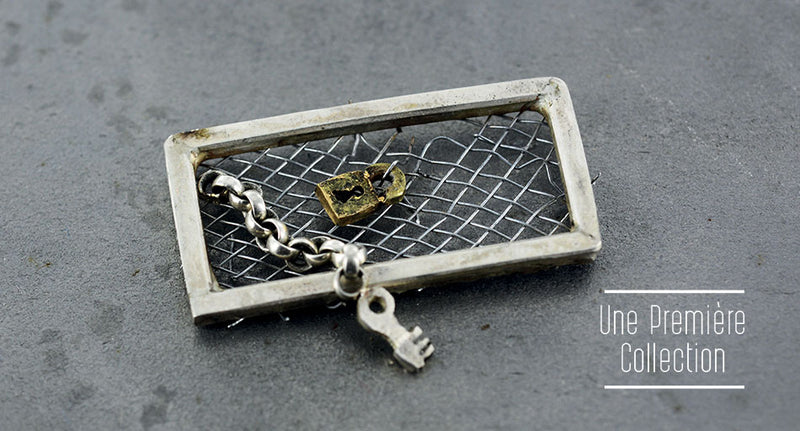
University enabled me to acquire an open mind, to travel and to read a lot too, which I didn't necessarily do before. These years gave me the opportunity to spend a year living in Milan, Italy, to complete my master's degree. While I was preparing for the national education exam, I started working and went off to teach French in Portugal. I then came back to France to work in a secondary school with disabled students. In retrospect, I would have been bored not to have experimented, to have tried things out for myself. I don't regret having tried something else, I didn't close any doors.
Until 2006, I was just helping out in the workshop alongside my work, I enjoyed tinkering, it was just a hobby. But the more I went, the more I realized how much I enjoyed being in that environment, and I decided to make it my job. I felt at home in this creative environment, where you can combine manual work with thinking about new, challenging projects. I asked my father if I could work with him, and his reply was: "You have to start by working somewhere else to legitimize yourself. So I went to work in a traditional chain and primer workshop in Lyon, to train, discover other techniques and gain more experience. I worked at the Verney Dray workshop to learn the basics of the trade. I started in September 2007, and stayed for a year before joining Tournaire. Like any change of profession, it required a lot of hard work, but it was a very rewarding adventure.
I had learned a lot at Verney Dray, and when I joined Tournaire, I started in the workshop. I was lucky enough to be trained by colleagues who gave me their little secrets, and then I developed other techniques myself, with the experience I'd gained. Gradually, I came to create my own creations, and through meetings with customers, personalized orders and word-of-mouth, I made a name for myself. From there, I started creating jewelry and contributing to the collections. This culminated in the creation of my first collection, Lock and Love, in 2013. It was a special moment because it was the first complete collection in the history of Tournaire ; up until then we created models as we went along, which then made up a collection.
The idea came to me gradually, and I really started developing the project in the summer of 2012, then the collection came out in the spring of 2013. I believed in Lock and Love right away, I had everyone's support and I knew it had a strong symbolic meaning. Releasing this collection was quite intense, I tried to manage everything from design to manufacturing, marketing and sales. I realized it was a lot of work, but Lock and Love was an accomplishment and a turning point for me. This collection helped me to move into the public eye as a more official designer, whereas I didn't necessarily have that image. I gained credibility.
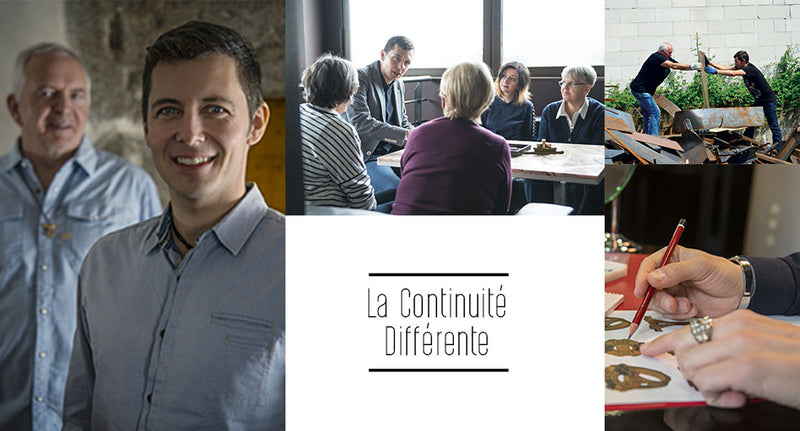
At the time of release, of course, I was worried that the collection wouldn't work, but I think my biggest fear was being compared to my father. I'm extremely lucky to be able to do the work I love, but being the "son of" is never easy. Either what I do is too similar to my father's work, or my creations are too different from the spirit Tournaire. What satisfies me about Lock and Love is that it's different from my father's work, while still being connected by codes. There's the theme ofarchitecture with the bridge, and there are a lot of symbols that my father worked on and that are found in a different way in my creations. I like to say that I place myself in the "different continuity" of my father's work.
Today, I continue to imagine jewelry models, including My Little White Stone, the solitaire that was missing from the Alchimie collection. It takes up the House's codes Tournaire : the square, the triangle and the round. And, of course, I continue to work on the personalized creations that our customers ask for. For several years now, we've been organizing gemology workshops in Montbrison, Lyon and Paris to introduce our customers to the House's vision of stones Tournaire. We set up small groups so that the people who attend our events can handle the stones, and it's a real turn-on for those who take part.
The guarantee of uncompromising craftsmanship
OUR TITLES AND LABELS





